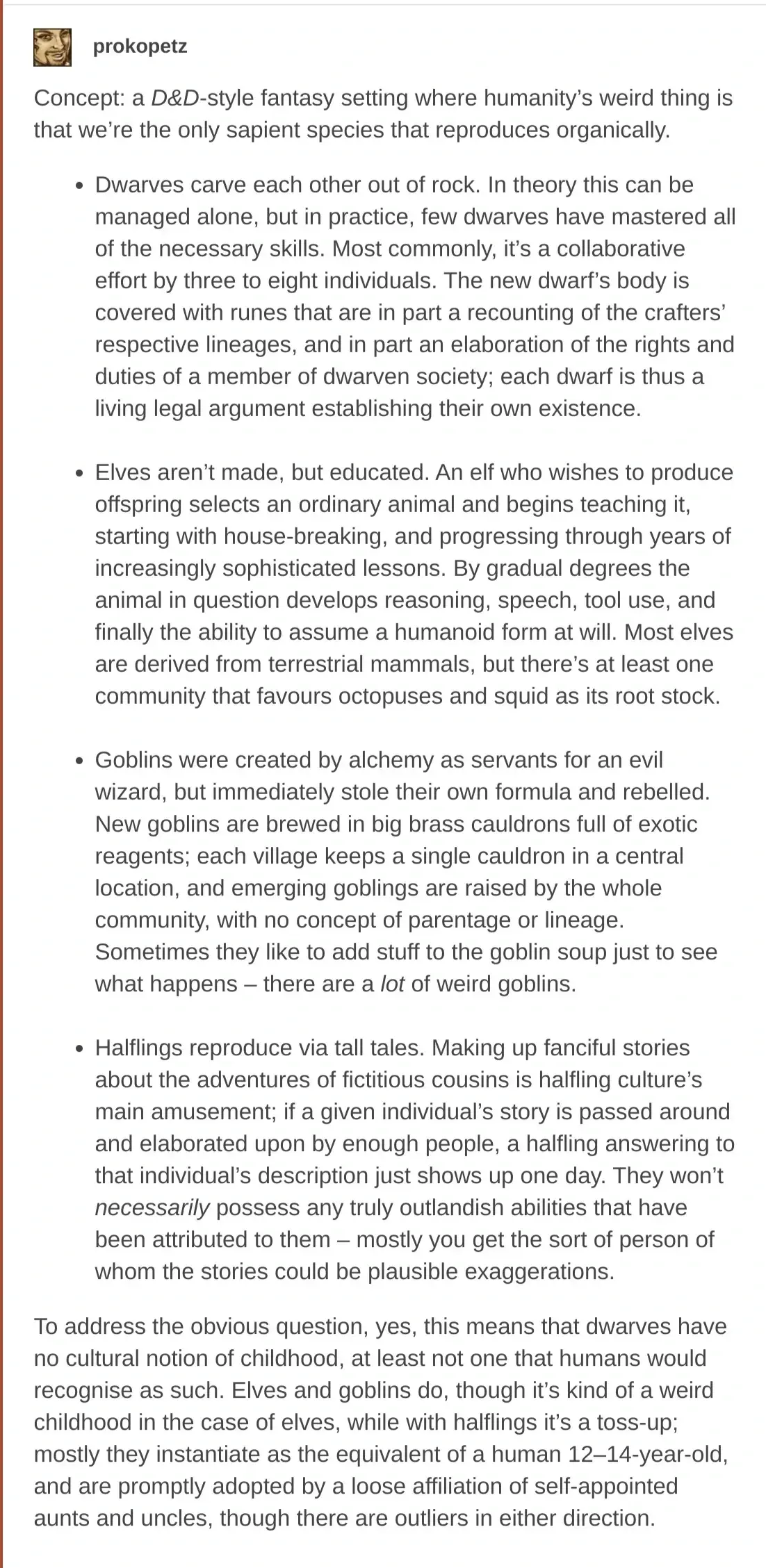Because you’d end up with a load of butter from the churning.
- 3 Posts
- 271 Comments

 4·2 months ago
4·2 months agoDon’t do this - plugging in an infected drive can infect the secondary computer; you may wish to plug it into a linux or other hardened system to get the data however. The post by @silverdiamond is a better response.

 1·3 months ago
1·3 months agoLOL! Blast from the past… Dead n00bs scattered everywhere.

 7·3 months ago
7·3 months agoAnd this is how you handle responsible disclosure… 34 minutes for simply an e-mail list, no login details or private information.
There are places where it’s used well. The Matrix, for example. Someone elseThread said Max Max: Fury Road, and I agree on that. Those are… at the moment… the only two that aren’t abominations of decolouring, though.
Caring for others is good for you. Even if you look at it shellfishly, it is still true.
Had to.
I’ve never free-swam, but when I was a kid (up to early teens, maybe 14?) I had swimming lessons. I was always told the lessons of the waterways, which I vaguely remember now, but one of them was kick off your shoes because they will kill you. We had to recite those back at the start and end of the lessons, what to do if you fell in. Kick off your shoes because they will kill you.
Only lesson I remember, funnily enough.

 2·3 months ago
2·3 months agoAs Terry Pratchett, via the voice of Sam Vimes, once put it, “This is love-in-a-canoe coffee if ever I saw it.”

 5·4 months ago
5·4 months agoThey’ve explicitly acknowledge the overpromise in the part of NMS (And, thanks to the continuous, rolling, free and global updates to NMS, have more than delivered on everything they promised and then a load more that they didn’t promise, including next-generation graphical updates, and entire new procedural generation systems that have added even more to the environment).
They’ve gone above and beyond to deliver, I’d even hazard a guess that they’ve over-delivered as far as any bureaucratic or financial director is concerned. They’re working full-time on NMS nearly 10 years on from release! They’ve done enough to warrant a modicum of trust.
I’m not pre-ordering, but I’ll be watching with interest, and will likely buy on day-one.
That’s what the guy said. Money isn’t “intrinsically” real - it doesn’t have something in-and-of itself. It’s extrinsically real - it represents something in the society we live in, a system of arbitrage and barterage that we use to represent an amount of work (Poorly, and with little benefit to a large number of people).
So no - if the extrinsic reality changes, then the barter or arbitrage currency will change - bottle caps, for instance, take over. But for a large society to function, a commonly accepted means of representing “value” has to be agreed upon. I can’t just say, “Well, I’ve got the worth of x hours worth of time spent on projects to provide”, instead I’ll say “I’ve got x pounds to provide”.
Originally, this was made more explicit, and it still exists on UK currency: “I promise to pay the bearer…” At that point, the notes had a (Bank-enfornced) intrinsic value. The words meant a promise to provide the currencies face-value in Gold. Now, we’ve done away with gold-backed currency, and the raw value is arbitrary, it has no intrinsic value but that set by extrinsic realities.

 4·4 months ago
4·4 months agoIt’s pseudo-realtime; things happen on a tick, but that tick is pretty generous in timings and you can pause the game at any point.
 1·4 months ago
1·4 months agoSodium Ion battery cells (From the article):
- Energy Density: 145Wh/kg (How much Weight)
- Energy Desnity: ??? (How much Volume)
- Life cycle: 1,500 charges (Normal temperatures)
- 92% capacity at -20°C
Lithium Polymer (From Harding Energy - https://www.hardingenergy.com/lithium-2/ - assuming this is representative)
- Energy Density: 100 - 158Wh/kg (How much Weight)
- Energy Density: 185 - 220Wh/l (How much Volume/Size)
- Life Cycle: ~500 (No temperature comments)
- Operable Temperature: -20°C - 50°C
That feels to me like the reported characteristics are on-par or better. Whether the real-world characteristics are the same, and if they really last as long is an open question.
I’d love to find out the Wh/l - i.e. how much physical size is needed to store the same weight of battery. It’s not such an issue with the likes of an e-bike, or even so much a car, as there’s spaces to shove it, but in something like a phone (Especially when people are so fixated on ‘super slim devices’ to the detriment of all else), if it’s 2 or 3 times larger physically, I can see it not catching on in those areas.
Searching on the Wh/l for Sodium batteries, I found nothing that seemed authoritative.
I’ve been using an Ikea Markus for about 15 years, which I’ve been really comfortable with and is not super expensive. It’s not massively adjustable, so if it doesn’t fit your body shape, it might not be for you; but at the same time, it’s fit me and works really well and has enough adjustment that I’ve been able to shift through quite a few different changes in my life over that time. The ‘pleather’ is flaking now, and the padding has completely collapsed, but I’m looking to replace with another one of the same because it’s been good to me, which is probably the highest rating I can give something… it’s worn out from massive amounts of use, and is now due for replacement with exactly the same product.
Genie vs Jafar… you can tell by the colour ;)

 8·5 months ago
8·5 months agoMost American white loaf bread recipes…
Even in the UK, we would call most American bread “fortified dough”, like a sweet/pudding, not bread. I bake occasionally and it’s flour, water, salt and yeast.

 5·5 months ago
5·5 months agoGoogle Translate says, “Husband’s side hooks up with Fang Juxing, the best girl on Wannu.com!”

 7·5 months ago
7·5 months agoIt’s exactly the same gravitational pull as the star that previously collapsed… (And I’ve not read the article (yet), this is just a personal nitpick that I’ve had for a LONG time).
–edit after reading the article–
In terms of inevitably falling into a black hole, it’s only the material that formed interior to three times the event horizon radius — interior to what’s known as the innermost stable circular orbit (ISCO) in general relativity — that would inexorably get sucked into it. Compared to what actually falls into the event horizon in our physical reality, the purported “sucking” effects are nowhere to be found. In the end, we have only the force of gravity, and the curved spacetime that would result from the presence of these masses, affecting the evolution of objects located in space at all. The idea that black holes suck anything in is arguably the biggest myth about black holes of all. They grow due to gravitation, and nothing more. In this Universe, that’s more than enough to account for all the phenomena we observe.
That summary explains it better than I can.

 2·5 months ago
2·5 months agoThat’s enough to put me off it. It’s quite a common routine - get something out enough until the engagement falls off, then produce another game that’s similar (So you can use the same underlying engine) but different enough, maybe slightly change the name of the studio enough so that it still matches the actual underlying company but isn’t initially obvious, and then release a new one. Some scummy companies go through three or four cycles before disbanding a company and setting up afresh…

 3·5 months ago
3·5 months agoIt needs a big, red stripe. And possibly a beard… and a smaller jet that can be called Boy.








Late response, sorry - but I don’t see why not? I mean… this is part of the standard plug-in module system available in most malware creation tool-kits, so it should be assumed that USB drives of unknown provenance will either 1) contain malware as part of the USB auto-run (Now not used very often, but can infect older computers), or 2) part of the USB firmware just as standard operating procedure.